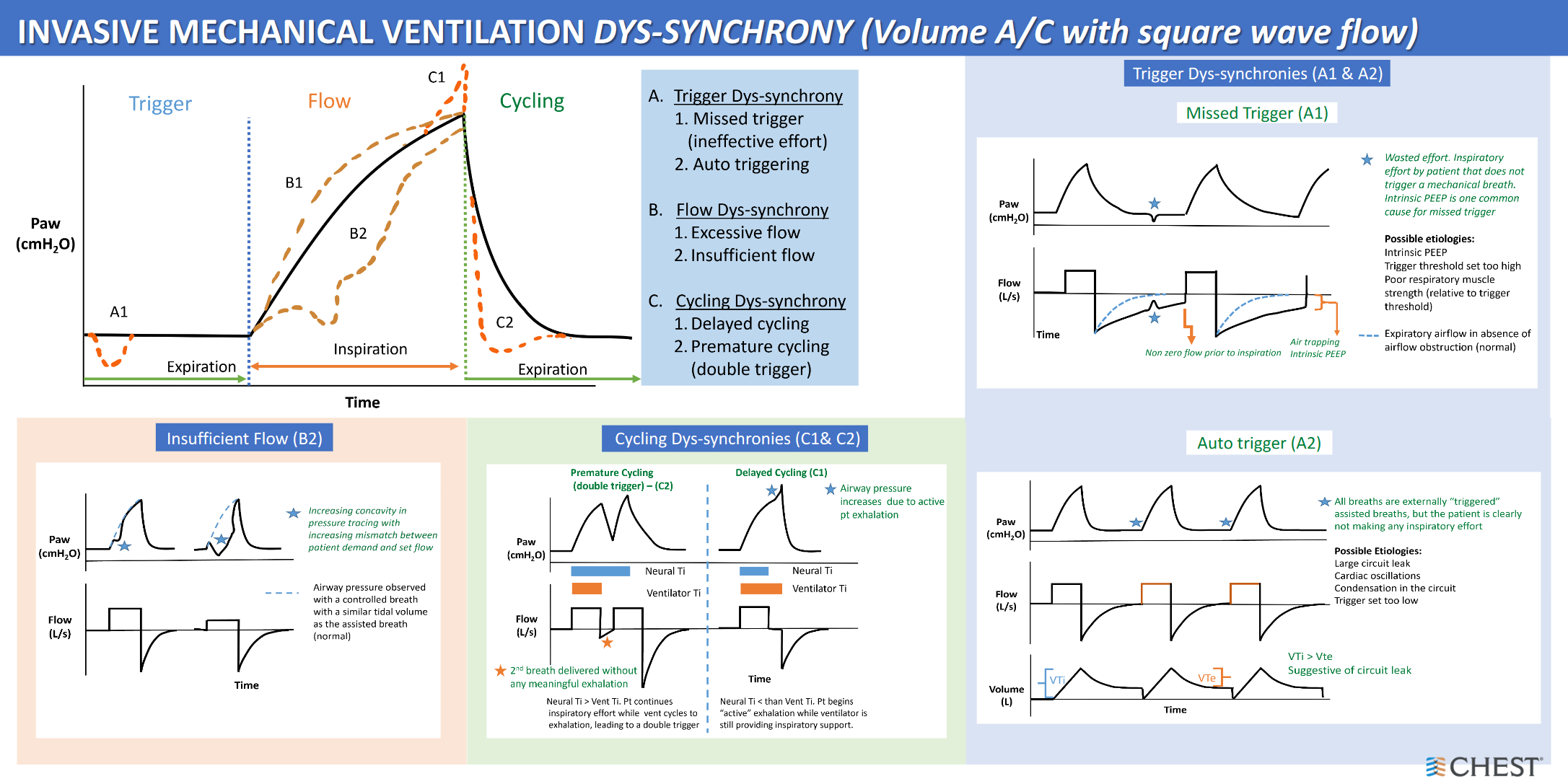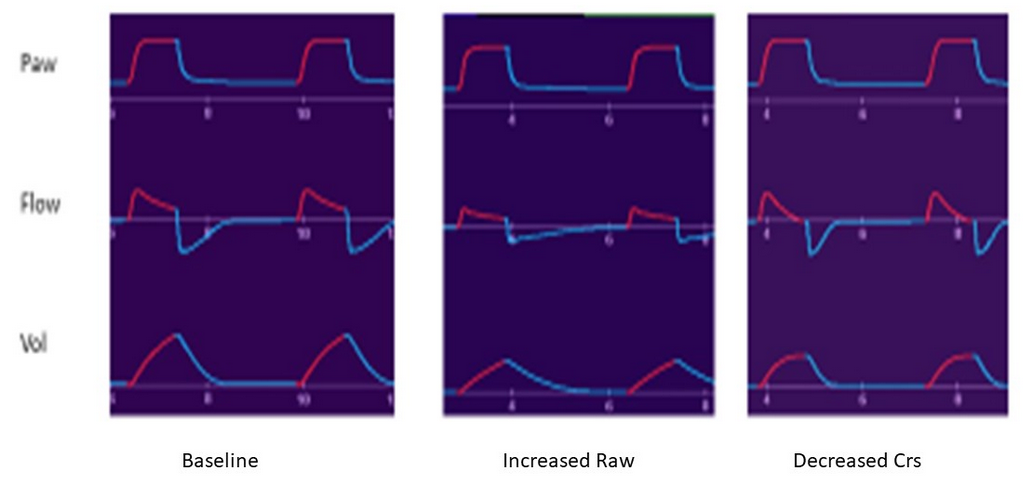basic understanding of ventilators
- related: ICU intensive care unit, Pulmonology
- tags: #permanent
- source: Murray and Nadel Ch 135 Mechanical Ventilation, design features of modern mechanical ventilators
Ventilator things
- ATC is automatic tube compensation.: adjust pressure/flow based on ET tube diameter.
- flow vs pressure limits
Parameters of ventilation
Modes of ventilation
- basic modes of ventilators
- assist control ventilations are modern CMV ventilators
- NAVA senses phrenic nerve for ventilation
- APRV has less sedation and paralysis
- PEEP and plateau in APRV
Dysynchrony
- premature cycling is caused by high trigger sensitivity or low inspiratory time
- delayed cycling caused by low trigger and high inspiratory time
- changing ventilation target from flow to pressure can help with flow starvation
- reverse triggering is when patient initiates 2nd breath
- double triggering is when patient initiates 1st breath
- adding inspiratory hold to improve double triggering
Others
Resistance = Peak P - PEEP
Increase flow rate decreases resistance (may not see on pressure curve anymore)
Normal compliance = 80-100 cc/cmH2O
Resistance = (dynamic - static pressure) / flow rate
Rc = Ppeak - Ppleateau cmH2O / flow L/S
Normal = < 2 cm H2O/L/sec for no intubated patient and < 10 for intubated patient
Go up on flow rate to 60L/min to start out
Increase Ti for double trigger.

 Pressure flow and volume graphics over time with pressure control ventilation at baseline, under increased resistance conditions (increased Raw), and under reduced compliance conditions (decreased Crs).
Pressure flow and volume graphics over time with pressure control ventilation at baseline, under increased resistance conditions (increased Raw), and under reduced compliance conditions (decreased Crs).
Links to this note
-
- related: basic understanding of ventilators
-
premature cycling is caused by high trigger sensitivity or low inspiratory time
- related: basic understanding of ventilators
-
changing ventilation target from flow to pressure can help with flow starvation
- related: basic understanding of ventilators
-
- related: basic understanding of ventilators
-
adding inspiratory hold to improve double triggering
- related: basic understanding of ventilators
-
APRV has less sedation and paralysis
- related: basic understanding of ventilators
-
assist control ventilations are modern CMV ventilators
- related: basic understanding of ventilators
-
calculating driving pressure in pressure control mode
- related: basic understanding of ventilators
-
delayed cycling caused by low trigger and high inspiratory time
-
- related: basic understanding of ventilators
-
- related: basic understanding of ventilators
-
- related: basic understanding of ventilators